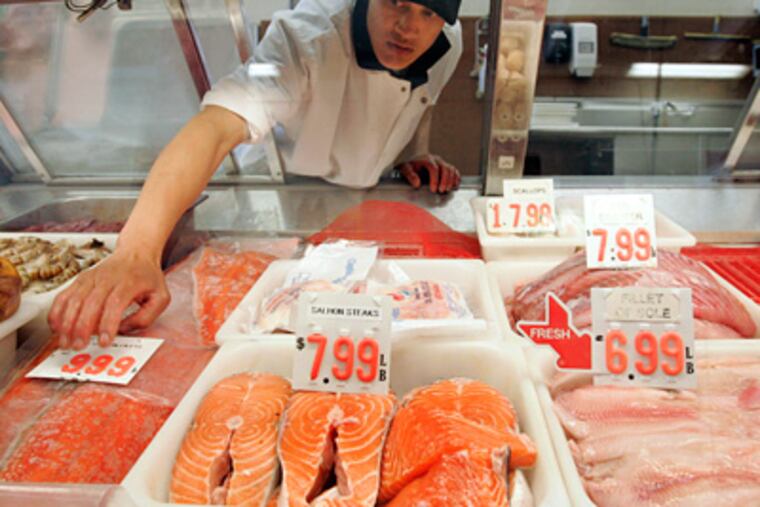How to shop for fish & save the oceans
How much seafood will be left after 2050? That question, debated by scientists for years, was raised again recently at Cooking for Solutions, the Monterey Bay (Calif.) Aquarium's annual event about sustainable seafood. To hear the scientists, chefs and fishermen tell it, the world's oceans are in

How much seafood will be left after 2050?
That question, debated by scientists for years, was raised again recently at Cooking for Solutions, the Monterey Bay (Calif.) Aquarium's annual event about sustainable seafood. To hear the scientists, chefs and fishermen tell it, the world's oceans are in trouble. Some prized food, such as Atlantic cod, have been heavily overfished. Other species are inedible, but are ensnared unintentionally in dredges and trawl nets - two ways of fishing that also damage habitat. And some seafood farms pollute waters and spread disease.
These problems aren't going away. Rising world population and demand for seafood are putting ever more pressure on the oceans, said Geoffrey Shester, senior science manager of the Monterey Bay Aquarium's Sustainable Seafood Initiative.
"People want to eat salmon year-round," he noted. "It's created demands for luxury products that need to be met."
What's a concerned shopper to do? Here's a look at four steps toward healthier oceans:
Choose sustainable seafood
While shopping at the seafood department or reading a menu, consult these resources: "Seafood Watch," the Monterey Bay Aquarium's lists of responsibly harvested and farmed seafood and sushi, or the Blue Ocean Institute's "Guide to Ocean Friendly Seafood." Also look for the blue label from the Marine Stewardship Council, a leading certification program for sustainable seafood.
The organizations' Web sites - seafoodwatch.org, msc.org and blueocean.org - offer more information about fisheries and farms that maintain proper seafood stocks and don't degrade the environment.
Befriend seafood buyers
When shopping in markets or ordering off a menu, ask seafood buyers several questions: Where did this seafood come from? How was it caught? Or was it farmed? And if it's not in stock, can it be ordered?
Shester and others say customer requests help broaden the market for sustainable seafood. In 2001, 20 percent of chain restaurants, retailers and wholesalers dropped seafood products because of environmental considerations, according to the Seafood Choices Alliance program. By 2007, that figure grew to 37 percent.
Eat different seafood
Besides checking the lists and asking lots of questions, try something new. The Cooking for Solutions events at the Monterey Bay Aquarium gave a taste of what's possible, from dill-cured Pacific halibut with sweet mustard sauce and black bread to American barramundi with squash emulsion and asparagus.
These dishes are a far cry from salmon teriyaki, tuna sandwiches and popcorn shrimp. "We've become so narrow, and the result of that is this intensive pressure on these stocks," Shester said.
Educate yourself on the issues
One debate that's still playing out is the future of aquaculture.
Some, such as Zeke Grader, executive director of the Pacific Coast Federation of Fishermen's Associations, oppose fish farming in the ocean. He said closed systems would prevent habitat pollution, fish escapes and transfer of diseases.
Others say it's possible to raise seafood in the ocean (a process called mariculture) with negligible environmental impacts. Neil Sims, president of Kona Blue Water Farms, raises yellowtail known as Kona Kampachi off the coast of Kona, Hawaii.
Kona Kampachi are bred from wild fish native to the area, so Kona Blue isn't introducing a new species to those waters. He's reducing the amount of fish oil and fish meal used in the feed of his carnivorous fish, thereby lessening Kona Blue's reliance on marine resources. And he placed his farm in strong ocean currents to lessen the impact of fish waste. So far, monitoring equipment hasn't found any surrounding pollution, Sims said.
Expect this debate to turn more contentious with the growth of aquaculture. Farms already account for about half of the world's seafood, according to the United Nations' Food and Agriculture Organization.
"Wild stocks are flat or declining," Sims said. "In the United States, mariculture hasn't begun to reach its potential." *